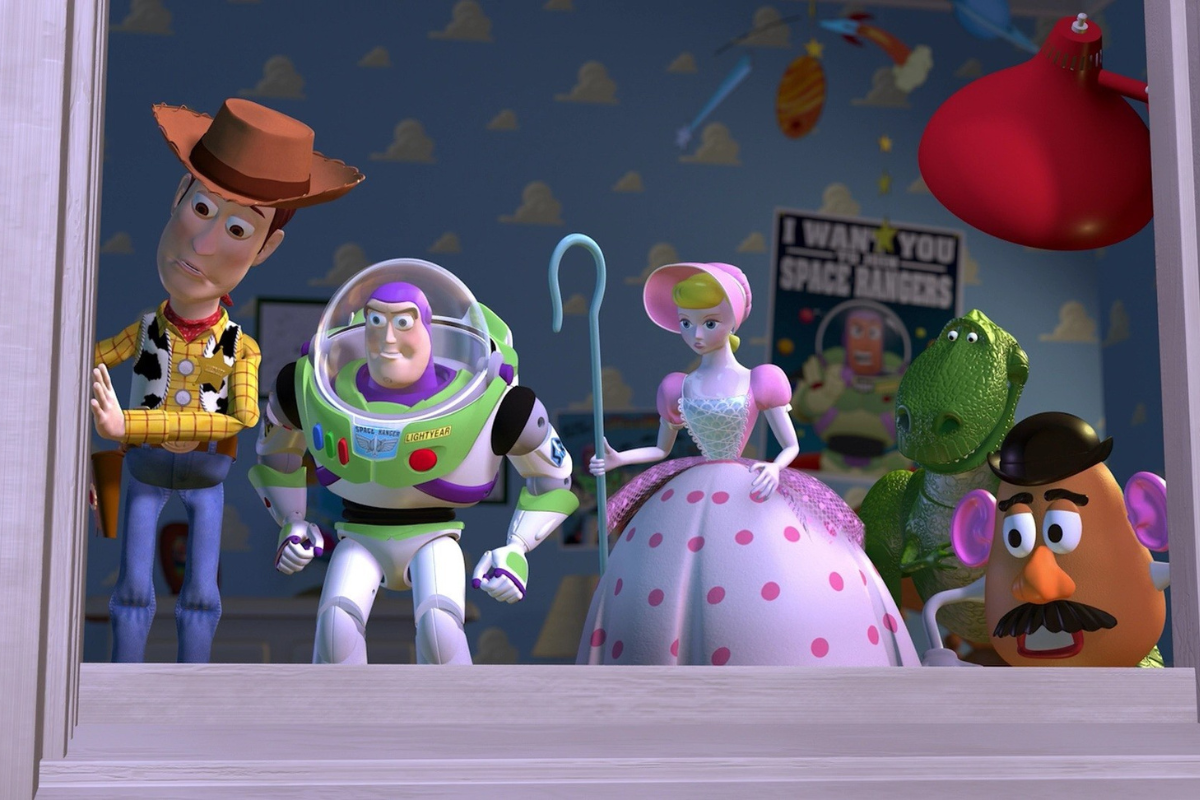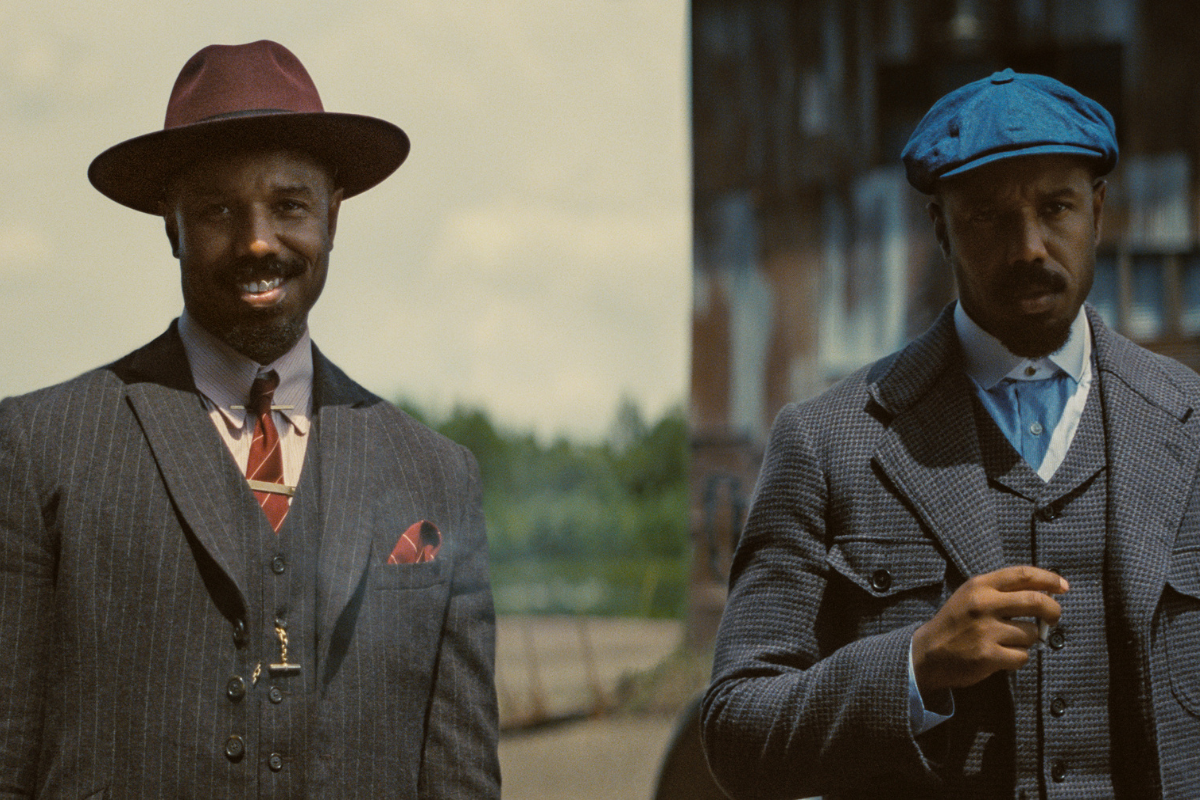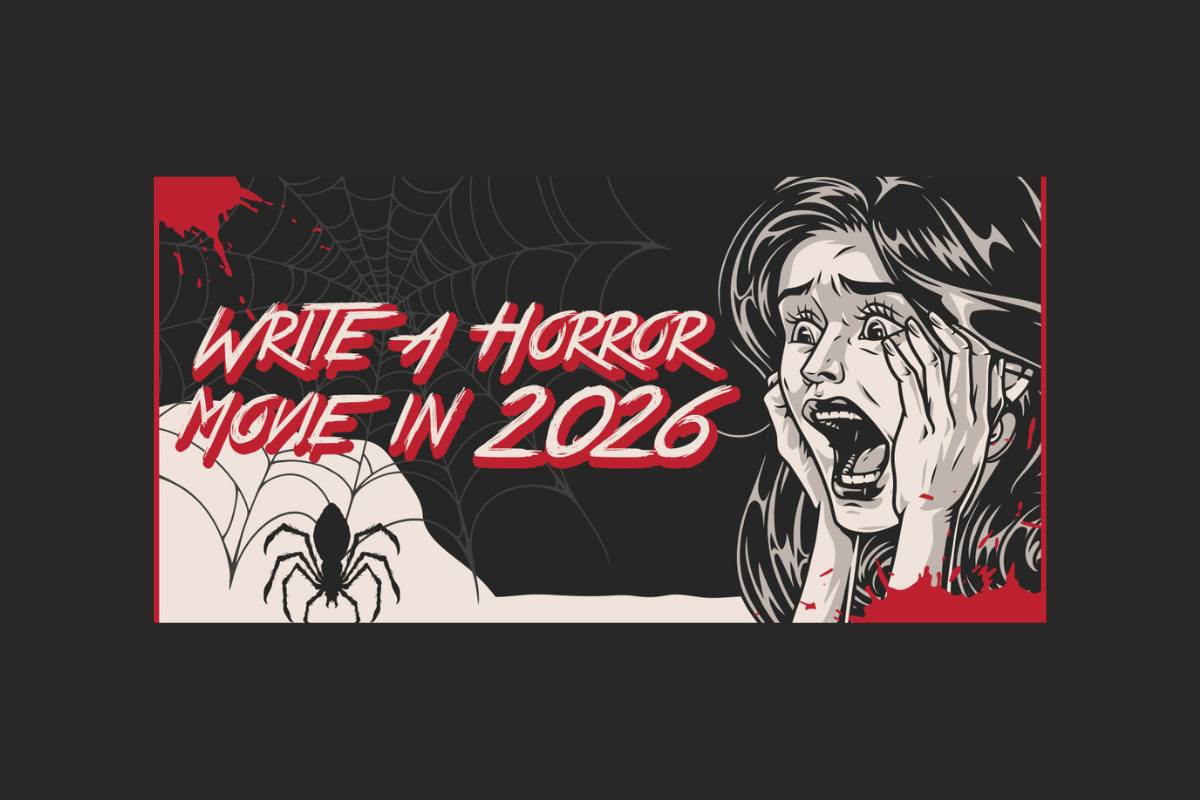Craft: How To Write To Attract A Movie Star
Chances are, if you want to sell your screenplay to a major film producer, you’re going to have to write the kind of role that a movie star is dying…
Chances are, if you want to sell your screenplay to a major film producer, you’re going to have to write the kind of role that a movie star is dying to play.
I accomplished this feat almost by accident when I chose Napoleon Bonaparte as the hero for my film project, Betsy and the Emperor. I wrote a film treatment first, then a novel based upon it—and got my then-unpublished book into the hands of stars. In short order, I had actors like Dustin Hoffman, Anthony Hopkins and Al Pacino wanting to play the role in a film version. Was this because I had written the greatest role since Hamlet? No, though I’d like to think otherwise.
The real reason movie stars were interested in the role in my book was that they would be playing one of the best-known “great men” of history—a brilliant military and political leader who crowned himself emperor, a pithy and fascinating speaker, a mercurial personality who rose from relative poverty and obscurity to power and riches, a great lover, the most famous man of his century who literally conquered the world. He was both tender and strong, high-minded and ruthless. My story depicted him when he was facing the greatest struggle of his life: after his defeat at Waterloo when he was held prisoner by a cruel jailor on St. Helena. Here, Napoleon found renewed strength in his innocently playful, mischievous friendship with an English teenager. Napoleon had soared to the heights of greatness and eventually plunged to the depths of defeat and despair, though he fought bravely to the end to keep his dignity and self-respect in the face of almost impossible odds.
Who wouldn’t want to play a role like that? Of course, it didn’t hurt that a lot of popular movie stars are short—like Napoleon. At the time I wrote my book, it had been a while since any movie about Napoleon had been produced. So the timing was right, and the story was (mostly) true.
The lesson in all this for you is that if your timing is good, and you can come up with an idea for a film about a great man or woman of history—preferably, one who is widely known—who hasn’t been seen on a movie screen in a while, you may be able to attract a star to the role. By “great” I mean famous activist figures of history or legend who launched wars or social revolutions and whose impact was earth-shaking: Joan of Arc, Robin Hood, King Arthur, Rob Roy, Zorro, Jesus of Nazareth—characters like these are fodder for this kind of movie. Keep in mind, though, that when writing films like these, your hero must be active, not merely an intellectual or literary revolutionary. Someone like Robin Hood, who was out shooting arrows and rescuing fair maidens from the villain’s clutches, would probably work far better as film material than a movie about Karl Marx or Franz Kafka, interesting though those last two may have been.
As you probably noticed, most of the famous examples I gave above have been done to death in the movies. So that’s why it’s important that you either do a brand new twist on a familiar story, which is the best and wisest way to go, or make sure that there is nothing similar in development before you start writing your script.
Sometimes it pays to choose as the subject of your screenplay a fascinating, little known figure in history who had far more impact than most people realize. This will also reduce the chances that other writers will have something similar in development. Keep in mind that the criteria you should use for choosing your famous hero or heroine must be exactly the same as they would be for any other type of screenplay: Find a great story. If you could substitute “Joe Schmo” for your famous protagonist and the story would be just as dramatic and riveting, that’s when you know you’ve chosen the right subject for your screenplay.
But what if you don’t want to write a historical epic? How do you go about writing the sort of role that will attract someone like Tom Cruise or the hot, young female star-of-the-moment (which seems to change every week)? Here are some tips I’ve gathered from my 20-plus years working as a story analyst and writer.
THERE ARE NO SMALL ROLES, ONLY SMALL ACTORS
Bunk! If you want to attract a star to your script, it had better be to play the lead role. Furthermore, the role better have lots of lines, shouldn’t disappear from the story for long stretches of time and should start on page one—or pretty close to it. If you persuade stars to read your script—which isn’t as difficult as you may think—you don’t want them to be leafing through it at home, saying to themselves, “Where’s my part?” Big stars want to play big roles.
So, what about all those cameos or small parts you see stars doing in movies? As we say in New York, “Fuhgedaboudit.” When a star takes a small role in a movie, he does this for only one of two reasons: as a favor to a friend or colleague, or the person who asked him to do it is so revered by him as a legend in the film business that the star would be willing to do anything he asks.
CHEWING THE SCENERY
When a star comes onboard a film project, the screenplay is often rewritten to suit him. What generally suits him will be more opportunities to chew the scenery: the kinds of emotional scenes and high dramatics that give actors a shot at winning an Oscar®. Why wait until a star comes onboard to write a star role? If you don’t write a great part, you may never get a star anyway. Read the final draft of your screenplay and ask yourself honestly: If I were Russell Crowe (or whichever superstar you’re trying to get), with Hollywood’s best roles by its greatest screenwriters being offered to me every day of the week—and those roles are coming to me with truckloads of cash on the table—why would I want to play the role in your screenplay? If you can’t answer that question, don’t bother to ask a star to read your screenplay.
Sometimes, a star may be well-known for doing one kind of role (such as comedy) but might love to get a part that offers him something new that shows you shouldn’t underestimate his acting ability. Robin Williams was smart when, early in his career, he played dramatic roles as well as comedic ones so that he would be thought of as a fine actor for drama, which, of course, he was all along. But some comedians hit it big in comedy and have trouble getting out of the rut once they get itchy to win an Oscar or respect for their dramatic “chops.” Can you write the role that will win Jack Black or Will Ferrell an Oscar for drama? Maybe in a few years they’ll be ready to do that. Maybe they’re ready now—or maybe they’ll never be ready. What about writing a great acting role for a really popular singer? Keep in mind that inside every comedian or singer there beats the heart of Laurence Olivier—or at least that’s the way most of them see themselves. Elvis wanted to be the next James Dean. Frank Sinatra was absolutely desperate to get the role of Maggio in From Here to Eternity, which won him an Oscar.
COMEBACKS AND “GEEZERS”
As a star gets a little older, or he chooses a few bad roles, his career can go downhill fast. He’s just as talented as he ever was, and, chances are, in the right role he could make a real comeback. Maybe the best time to approach him is when he’s not at the top of the world anymore—but isn’t so far down he’s completely forgotten. Dennis Quaid’s career was in a bit of a slump a few years ago, but he has made a great comeback thanks to choosing good roles in films such as The Rookie and Far From Heaven. Had you approached him during that window of opportunity a few years ago, before his career was back on track, you might have been able to get his attention. Kevin Costner was in a similar situation to Quaid’s for a number of years but already seems well on his way to a comeback. Still, it might not be too late to approach him with a great role. Or what about a great part for Sylvester Stallone?
It’s important to remember that you probably won’t want to reach too far back in time to find a star in need of a comeback. Don’t try to write a comeback role for stars like Leave it to Beaver's Jerry Mathers or Shirley Temple. Still, it’s often a great idea to write a supporting role for a beloved, aging star who hasn’t had a good movie part in a while. Toward the end of his career, it would have been fun to have written a great role for the late Jack Lemmon. Maureen O’Hara, a huge star in her day, had a good comeback role in the John Candy film Only the Lonely, some years back. Space Cowboys managed to put several beloved older stars in one movie: Clint Eastwood, Tommy Lee Jones and James Garner—though, of the three, Garner was the only one who hadn’t been seen much in films in a while. Jones works steadily, and Eastwood remains a perpetual star.
I’m such a fan of older actors that I wish I’d had the chance to write a role for Gregory Peck or Katharine Hepburn before they died. The key to writing roles for older stars is that, generally speaking, it’s best from a commercial standpoint if the film also has big roles for younger actors. You want to catch these older “falling stars” when they’re still healthy, eager to work and at the height of their acting powers.
Think about which great, older stars might want to come back one more time and win that Oscar (or a second one) before they go into permanent retirement, and write a role for them alongside one for a younger co-star. Most of these older stars are sick of reading scripts about a bunch of geezers who break out of a nursing home. Write a strong, heroic and unique part for a beloved older actor who has yet to win an Oscar or who hasn’t been seen on the screen in a while but may not be truly retired. Maybe he’s just waiting for the right role. Maybe it’s going to be yours.
MY LEFT FOOT AND BROKEN HEART
Actors like to play “underdog” roles in which they overcome great adversity and triumph in the end (Rocky, etc.). Actually, all screenplays should be about a protagonist who overcomes obstacles—that’s what good drama is all about. In fact, that’s even what good comedy is all about (think: Hope and Crosby in the “road pictures,” Charlie Chaplin or Buster Keaton). But actors enjoy playing roles in which the adversities they face are HUGE—and, often, visible. Whether the problem is mental illness (A Beautiful Mind), a physical disability (My Left Foot), the challenge of climbing Mt. Everest (Everest) or even trying to overcome mostly self-imposed limitations (Marty), the protagonist in your script should reveal what human beings are like under duress and show courage (or weakness) in the struggle to overcome obstacles. Actors often like to play villains—though good-guy stars like Tom Hanks are so beloved by audiences that it’s unlikely they will ever be fully accepted in less-than-heroic roles. (The Road to Perdition didn’t do as well at the box-office as Saving Private Ryan.)
SAY WHAT?
Keep in mind that to actors, words are like music, or rather, words are like song lyrics. Dialogue should have a rhythm to it, and speeches should sound good when read aloud. Read your dialogue aloud and hear how it sounds. Better yet, have your friends read it to you. You’ll hear any “clunkers.” Make sure that the words flow so the actor won’t be stumbling over them while trying to say your lines.
SHORT AND SWEET
Normally, you want your dialogue to be crisp and efficient—long, boring speeches aren’t a good idea. But when you’re writing a role for a star, you must give him a chance to do what he does best. Make sure there are at least one or two killer speeches in your script. They needn’t and shouldn’t go on forever, but they should give the actor a chance to strut his stuff. Remember Humphrey Bogart’s parting speech to Ilsa in Casablanca? (“Where I’m going, you can’t follow. What I’ve got to do you can’t be any part of. IIsa, I’m no good at being noble, but it doesn’t take much to see that the problems of three little people don’t amount to a hill of beans in this crazy world ...”) Make sure the star gets all the best lines.
Be careful how you describe the star role when you introduce it for the first time in your screenplay. Make it sound powerful and intriguing and very specific—perhaps resembling the actor’s own best image of himself—though never mention casting ideas in a screenplay. Keep character descriptions short. Don’t be overly specific about the character’s age or physical appearance. Words like “old” and “fat” are probably not a good idea, though there are exceptions to even this rule.
ROLES WITH “CHARACTER”
Some stars like roles that permit them to bury themselves in the part, use fake noses (Nicole Kidman tried this in The Hours) or otherwise disguise themselves so thoroughly that the actor is almost unrecognizable. Dustin Hoffman is this kind of actor (Midnight Cowboy, Rain Man, etc.). In the past, Alec Guinness and Laurence Olivier were famous for transforming themselves physically to play a part, and before them actor Lon Chaney was known as “the man of a thousand faces.”
Other stars—like Tom Hanks or Harrison Ford, today, or Clark Gable in Hollywood’s heyday—pretty much play themselves from role to role, a highly underrated art form. But most stars like playing character parts, which permit them to really show their acting skills. So your task is to write a great character role which is also the lead role in the movie. Jack Nicholson has made a whole career of playing this kind of part, most recently in Something’s Gotta Give, Anger Management and About Schmidt; but even as a young actor his leading roles were really larger-than-life character parts (One Flew Over the Cuckoo’s Nest, for example).
Older or less conventionally handsome/ beautiful stars usually end up playing character roles. Some aging stars made a successful transition from young, romantic leads to character parts. Jimmy Stewart did this when he went from being a callow youth in Mr. Smith Goes to Washington to, in his later years, starring in Hitchcock movies and Westerns. Today, Paul Newman has made a graceful transition to character roles, and Burt Reynolds—probably (along with Redford, Eastwood and Bronson) the most popular leading man in films when I was growing up—has also shifted over to playing this kind of part.
Likely, most of the stars we admire today will shift over to playing character parts as they grow older. The shift will happen naturally because of the aging process and younger stars taking their places. This is also a result of the fact that most actors, young or old, like to be challenged by the roles they play. Clearly, Hugh Grant wanted more of a challenge when he took on the nuanced lead role in About a Boy, for which he turned in a fine character-role performance that showed he can do much more than stammer charmingly.
In short, when writing a role for a star— especially an older star—think “character role” but write “lead.”
THE WHOLE KIT AND KABOODLE
A good role for a star should exhibit the whole panorama of human emotions: cruelty and compassion, tenderness and humor, self-restraint and impulsiveness, frustration and triumph, laughter and tears. The character may be restrained in the way he expresses these emotions or “over-thetop,” but the feelings should always be boiling below the surface. The characters must be passionate in pursuit of their goal. Characters who show courage do this not by being emotionless but by acting bravely or selflessly despite fear. The plot must provide the hero with enough challenges and conflicts to exhibit these emotions. That’s where knowing how to structure your script comes in. In the end, good story structure is even more important than dialogue in writing a great screenplay. Stars realize that it’s not just the role you write for them that determines the success of a movie, but also the story as a whole. So, learn your craft.
Remember that even if your film’s protagonist is an anti-hero, he should have at least some admirable qualities and on some level the audience must be rooting for him to succeed.
If you can write a great, sexy role—in the context of a great story—that a big movie star is dying to play, you may find your fledgling screenwriting career will explode (in a good way).
Originally published in Script Magazine March/April 2004
~~~~~~~~~~~~~~~~~~~~~~~
Writing a script to attract A-list actors is but one way to help your odds of selling your screenplay. Scott Myers of Go Into the Story has many more tips to help in his on-demand webinar, Story Concepts that Sell
DOWNLOAD NOW!
At A Glance:
- Enjoy this live webinar providing proven principles into one of the most critical aspects of screenwriting: story concepts.
- Learn the ins and outs of how to generate, develop, and assess story concepts – and zero in on the best ones.
- Discover specific practices professional screenwriters use to surface strong story concepts
Staton Rabin (www.StatonRabin.com and www.ScreenplayMuse.com) is a screenplay marketing consultant, script analyst, and "pitch coach" for screenwriters at all levels of experience. She is also an optioned screenwriter, has been a reader for Warner Bros. Pictures, New Line Cinema, William Morris, and major screenwriting contests, and was a frequent guest lecturer at NYU. Her novel Betsy and the Emperor was at one time in development as a movie with Al Pacino attached to star. Staton Rabin is available for script reading/analysis and consultations and can be reached at Cutebunion@aol.com.







